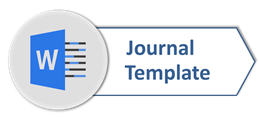Evaluation of Complete IELTS Bands 5-6 from Teachers’ Perspectives
Abstract
Full Text:
PDFReferences
Amalsaleh, E. (2004). The representation of social actors in the EFL textbooks in Iran. Unpublished doctoral dissertation, Shiraz University, Shiraz.
AS, W. S. H., Michael, A., Hornby, A. S., Wehmeier, S., & Ashby, M. (2005). Oxford Advanced Learner's English-Chinese Dictionary: AS Hornby, Sally Wehmeier, Michael Ashby. Oxford University Press.
Azim, M. U., & García, M. I. M. (2020). Lexical Load of Punjab Curriculum and Textbook Board's English 1 and English 2. Bulletin of Education and Research, 42(2), 15-32.
Azizifar, A., Koosha, M., & Lotfi, A. R. (2010). An Analytical Evaluation of Locally Produced Iranian High School ELT Textbooks from 1970 to the Present. English Language Teaching, 3(4), 132-141.
Brown, J. (1995). A systematic approach to program development. Massachusetts: Heinle & Heinle Publishers.
Brown, N. J. (2001). Democracy, history and the contest over the Palestinian curriculum. Washington DC: The Adam Institute.
Chall, J. S., Conard, S. S., & Harris-Sharples, S. (1991). Should textbooks challenge students? The case for easier or harder textbooks. Teachers College Press.
Cunningsworth, A. (1995). Choosing your coursebook. Macmillan.
Ellis, R. (1997). The empirical evaluation of language teaching materials. ELT journal, 51(1), 36-42.
Garvin, D. A. (1988). Managing quality: The strategic and competitive edge. Simon and Schuster.
Graves, K., & Xu, S. (2000). Designing language courses: A guide for teachers (No. 428 G7.). Boston, MA: Heinle & Heinle.
Hanifa, R. (2018). EFL published materials: An Evaluation of English textbooks for junior high school in Indonesia. Advances in Language and Literary Studies, 9(2), 166-174.
Harmer, J. (1998). How to teach English: An introduction to the practice of English language teaching. Edinburgh Gate, Harlow, England: Addison Wesley Longman.
Hashemi, S. Z., & Borhani, A. (2012). Textbook Evaluation: An Investigation into Touchstone Series. Theory & Practice in Language Studies, 2(12).
Hutchinson, T., & Waters, A. (1987). English for specific purposes. Cambridge University Press.
Jannah, D. R. V., & Robiasih, R. H. (2019). English textbooks evaluation for the seventh grade. Journal of English Language and Pedagogy, 2(1), 65-76.
Jusuf, H. (2018). The models of checklist method in evaluating ELT textbooks. Al-Lisan: Jurnal Bahasa (e-Journal), 3(2), 17-35.
Kachru, B. B., Quirk, R., & Widdowson, H. G. (1985). Standards, codification and sociolinguistic realism. World Englishes. Critical Concepts in Linguistics, 241-270.
Kilickaya, F. (2004). Authentic materials and cultural content in EFL classrooms. Online Submission, 10(7).
Larsen-Freeman, D. (2000). Techniques and principles in language teaching. Oxford University.
Littlejohn, A. (1998). The analysis of language teaching materials: Inside the Trojan Horse.
Tomlinson, B. (Ed.). (2011). Materials development in language teaching. Cambridge University Press.
Mazdayasna, G., & Tahririan, M. H. (2008). ELT textbook evaluation: The case of English textbooks for high schools in Iran. Asian EFL Journal, 10(4), 1-22.
McGrath, I. (2002). Materials evaluation and design for language teaching.
Nurhamsih, Y., & Syahrial, S. (2018). Evaluation of English teaching materials used at a vocational high school based on Cunningsworth’s checklist. JOALL (Journal of Applied Linguistics and Literature), 3(2), 33-46.
Richards, J. C. (1998). Beyond training: Perspectives on language teacher education. Cambridge University Press.
Richards, J. C., & Rodgers, T. S. (2001). Approaches and methods in Language Teaching. New York: Cambridge University Press.
Savignon, S. J. (Ed.). (2008). Interpreting communicative language teaching: Contexts and concerns in teacher education. Yale University Press.
Masuhara, H., & Tomlinson, B. (2008). Materials for general English. English language learning materials: A critical review, 17-37.
Ur, P. (1996). A course in language teaching: practice and theory. Cambridge: CUP.
Widdowson, H. G. (1978). Teaching language as communication. Oxford University Press.
Skehan, P., Willis, E. J., & Willis, D. (1996). Second language acquisition research and task-based instruction. Readings in Methodology, 13, 17-30.
Tomlinson, B. (2012). Materials development for language learning and teaching. Language Teaching, 45(2), 143-179.
Tok, H. (2010). TEFL textbook evaluation: From teachers' perspectives. Educational Research and Reviews, 5(9), 508.
Van Leewen, T. (1996). The representation of social actors In CR Caldas-Coulthard & M. Caldas-Coulthard, C. R., & Coulthard, M. (Eds.). (1996). Texts and practices: Readings in critical discourse analysis. Psychology Press.
DOI: https://doi.org/10.33365/ts.v22i1.3507
Refbacks
- There are currently no refbacks.
Copyright (c) 2024 Zahra Talebi, Anita Omidinia, Mohammadreza Khodadoost

This work is licensed under a Creative Commons Attribution-ShareAlike 4.0 International License.
Teknosastik: Jurnal Bahasa dan Sastra
Publisher: Universitas Teknokrat Indonesia
Address: Zainal Abidin Pagaralam Street 9-11, Bandar Lampung, Indonesia
Website: https://ejurnal.teknokrat.ac.id/index.php/teknosastik/index

Creative Commons Attribution-ShareAlike 4.0 International License






